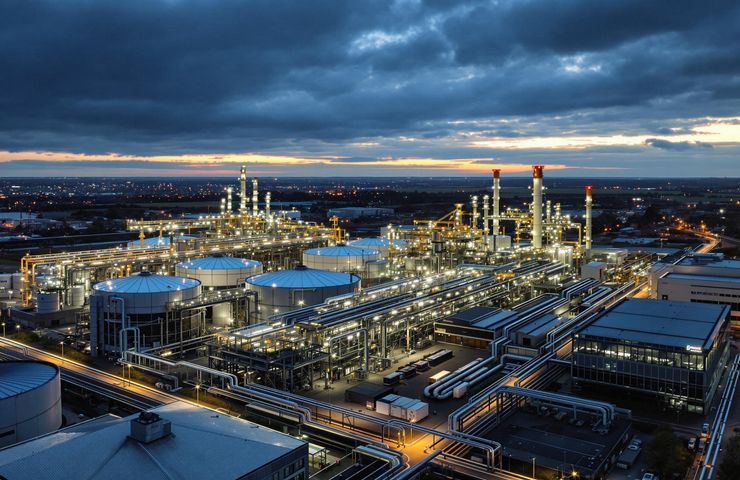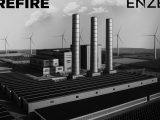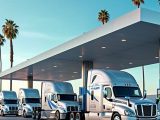
Green Hydrogen Delays Hit Thyssenkrupp Nucera Q3 Figures, Full-Year Outlook Intact
August 13, 2025This quarter, Thyssenkrupp Nucera—that German electrolysis specialist—pulled in €184 million in sales, down about 22% from €236 million a year ago. Operating profit (EBIT) flatlined at zero versus €8 million in Q3 2023. New orders slid to €167 million from €292 million, shrinking the backlog from €1.3 billion to €700 million. Why the slump? They’re wrapping up a wave of green hydrogen and chlor-alkali plants while kicking new projects down the road. Still, management stuck to its full-year outlook: €800–€900 million in sales and an adjusted EBITDA of €85–€105 million. That steady guidance gave investors a little confidence, even if the raw numbers turned heads.
What It Means
Project hiccups have become almost routine in the hydrogen production game—volatile commodity swings, creaky supply chains and permitting puzzles all play a part. When Nucera flags postponed shipments or deferred start-ups, it’s rarely customers bailing; it’s usually lining up grid connections, permits or financing. But stretched schedules do sting cash flow, keep fixed costs on the books longer and dent near-term revenue. Across Europe and North America, that could slow down industrial decarbonization in steel, ammonia and other heavy industries, risking those big net-zero promises. Lenders might hike risk premiums, jacking up the cost of capital for fresh green hydrogen ventures. The silver lining? When these plants finally fire up, they’ll hit a market starved for supply—likely scoring stronger pricing power. Watch working capital and free cash flow—they’re the real canaries in the coal mine, not just headline sales figures.
Technical Dive
At its core, Nucera’s playbook revolves around alkaline water electrolysis (AWE). In these cells, a potassium hydroxide solution shuttles ions between nickel-based electrodes, splitting H2O into hydrogen and oxygen when you feed it renewable juice. It’s a tried-and-true route to clean hydrogen, but margins are wafer-thin—every cent saved on electricity or extra hour of stack life can swing profitability. Nucera’s Q3 numbers hinted at slight margin gains in its green hydrogen arm, likely from sharper cell designs and tighter project wrap-ups. Yet with new orders pushed into next year, idle teams are driving overhead per unit higher. You can nail the tech, but without a steady electrolysis pipeline, the P&L gets restless.
Over on the chlor-alkali (CA) side, Nucera’s stacks churn out chlorine, hydrogen and sodium hydroxide from brine. It’s a mature, low-margin business that bankrolls R&D into electrode coatings and membrane tweaks for the green hydrogen line. Recent pilot runs boast 10% longer lifetimes and 5% less power draw per kilogram of H2. Those fine-tunes matter when you’re chasing the sub-$2/kg hydrogen threshold that many say is the ticket to scale up hydrogen infrastructure.
Strategic Angle
Headquartered in Dortmund, North Rhine-Westphalia, Nucera sits in one of Europe’s industrial heartlands—legacy coal pits, sprawling chemical parks and steel mills hankering for a decarbonization fix. The EU Green Deal and Germany’s hydrogen strategy have subsidies and guarantees pouring in, while the US IRA dangles fat tax credits. But policy isn’t plug-and-play—you still need bankable off-takers and grid hookups that actually work. That’s where projects stall: environmental permits, tender snags and real-world grid constraints. Until those choke points clear, Nucera’s order book looks half-empty—not because demand’s vanished, but because deals are parked at the starting line.
Meanwhile, competition is ramping up. From Denmark to Japan, rivals pitch PEM electrolysers promising 20% better efficiency—at a higher sticker price. Nucera’s alkaline tech still wins on cost per installed kilowatt, but it’s bulkier and leans on temperamental raw materials like nickel and titanium, which have yo-yoed this year. Europe’s push for local electrolyser gigafactories could cut reliance on Asian suppliers, but that’s a multi-year marathon. Nucera’s tightrope walk? Scale quickly without toppling its balance sheet.
Company Context
Born in early 2022 as a 50:50 JV between Thyssenkrupp Industrial Solutions and Industrie De Nora, Nucera blasted to €1.3 billion of orders by mid-2023, riding the green hydrogen wave. Reality hit in late 2024: final investment decisions slipped, raw-material and freight inflation bit, and banks cooled on renewables. Nucera insists most of that €600 million backlog dip is just postponed contracts, not outright cancellations. If that’s true, the growth runway still spans several hundred megawatts of planned electrolysers. But keep an eye on how they handle supply-chain financing and any renegotiation chatter—it could make or break the economics.
Showpiece projects—a 100 MW electrolyser in Hamburg’s port, a UAE ammonia-cracking pilot, a US refinery decarbonization scheme—have all run aground on financing rounds and regulatory reworks. Rising interest rates didn’t help, boosting the cost of project bonds. Word is Nucera’s CFO is lining up back-stop credit lines from the JV parents in case 2025 cash flows wobble. Nobody wants a repeat of Thyssenkrupp’s heavy debt load from the last decade.
Perspective
Let’s be blunt: many investors boarded the hydrogen hype train expecting instant fireworks. A quarter like this rattles the short-term bulls, no doubt. But zoom out: the logic for green hydrogen hasn’t dimmed—ever-cheaper renewables, looming carbon prices, corporate net-zero pledges all point the same way. You didn’t buy into Nucera for half-year wins; you signed up for a decade-long industry makeover. Sure, you’d like more deals sealed yesterday, but tech maturation marches to the beat of permitting, grid build-outs and workforce training. Nucera’s true hurdle isn’t its cells; it’s getting the ecosystem across the finish line.
The market sniffed that out—Nucera’s share price ticked up 3% on steady guidance, but it’s still below early 2023 highs. That gap reflects skepticism on backlog conversion—how much of what’s booked actually lands on the P&L? Carve-out IFRS figures will feed volatility, so expect analysts to stay jittery on quarterly dips. Yet global electrolyser demand is forecast to smash past 50 GW by 2030. In a world gasping for clean hydrogen, Nucera’s long-term pipeline could dwarf these short-term potholes—if they keep a tight grip on their cash runway.
Closing Insight
This isn’t the end of the green hydrogen hype—it’s a timing game. Stake your claim now, or risk getting left choking on carbon dust.



 With over 15 years of reporting hydrogen news, we are your premier source for the latest updates and insights in hydrogen and renewable energy.
With over 15 years of reporting hydrogen news, we are your premier source for the latest updates and insights in hydrogen and renewable energy.